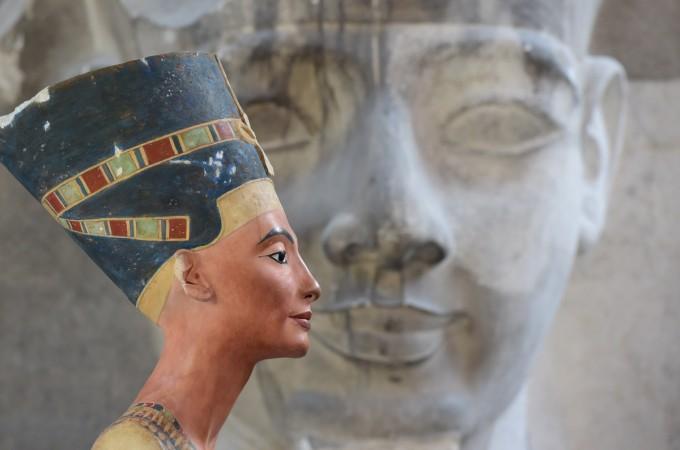
Nefertiti, one of Egypt's most influential queens and the mother of King Tutankhamun, has been brought to life by scientists from the University of Bristol by using 3D imaging technology. The initiative was taken to accurately recreate a bust of the queen.
Also read: Ancient prince's untouched tomb found in Siberia: Could it be an 'ice mummy?'
It took almost 500 hours for paleoartist Elisabeth Daynes to recreate the bust. The jewellery was handcrafted by Dior. Scientists mapped the face of the queen using 3D technology. However, the colour given to the ancient queen's skin has raised controversy. The queen has been given a fairer complexion and people now claim that she was never that fair in real life.
Using the latest 3D imaging technology, the mummy's face was digitally mapped to create a replica of her head. Egyptologist Aidan Dodson of Bristol University removed the protective glass covering of the mummy to examine it thoroughly upon receiving permission from Egypt's Ministry of Antiquities and The Egyptian Museum.
Twitter users questioned the color depiction of the queen's skin. One of the users wrote: "Nefertiti was not this ugly white lady."
Lagos-based Malaikan singer Jon Ogah stated that the queen was not her "true black self."
"When you leave your history to the hands of white people to help examine and reconstruct why won't Queen Nefertiti come out looking like a ghost not resembling her true BLACK self," he tweeted.
Egyptians had a vast range of skin color from brown to red, yellow and black. Men in ancient Egypt usually had a darker tone than women, proving the fact that men mostly participated in outdoor chores. However, Nefertiti's face according to experts seems to be in sync with ancient representations. Many people claimed that the queen's skin seems similar to the European population.
The process of 3D mapping by the scientists will be aired on the US Travel Channel's Expedition Unknown on Wednesday night. The 3D features actually provide an accurate depiction of the queen in real life, according to the team of scientists.
Nefertiti whose full name Neferneferuaten Nefertiti means "Beautiful are the Beauties of Aten, the Beautiful One has come" was either the mother or step-mother of the boy-pharaoh King Tutankhamun.
The mummy of King Tut's biological mother nicknamed Younger Lady, according to scientists is none other than Queen Nefertiti. Dodson says that the latest reading of the genetic data provides the evidence that the mummy of the Younger Lady is none other than Nefertiti herself.
The damaged mummy of the Younger Lady was unearthed in Egypt's Valley of the Kings in 1898. DNA analysis proved in 2010 that the Younger Lady is, in fact, King Tut's biological mother- Nefertiti.
Also read: Ancient Egypt: 2,000 year old mummy portraits reveal clues to modern paintings
Artist Elisabeth Daynès states that the jewellery on the bust handcrafted was by Dior's designers and "When you overlay the profile of the reconstruction with the famous Berlin Bust of Nefertiti, they are an incredibly close match," she adds.
The recreated bust using 3D technology will be featured in the TV series Expedition Unknown and will be aired on February 7 and February 14. #TODAYshow is still trending on Twitter and people are blaming authorities for turning Egypt's queen into a white woman. Check out how twitterati exploded on Nefertiti's fair complexion.
Why is #Nefertiti’s bust skin tone so pale? #todayshow
— norasdaughter (@noras_daughter) February 5, 2018
Americans insist on trying to make Nefertiti look like a white woman. #todayshow
— Mother (@fur69) February 5, 2018
So what you tellin me is that #Nefertiti wa Greek or Roman? https://t.co/AES4AZpsI3
— Poon Poker (@AfroAzin) February 5, 2018
Dear white people, the fact that her name was #Nefertiti is a clear indication she WASN'T white! ??♂️
— KRis (@nsabiyumva_) February 6, 2018
Watch the video here:

















